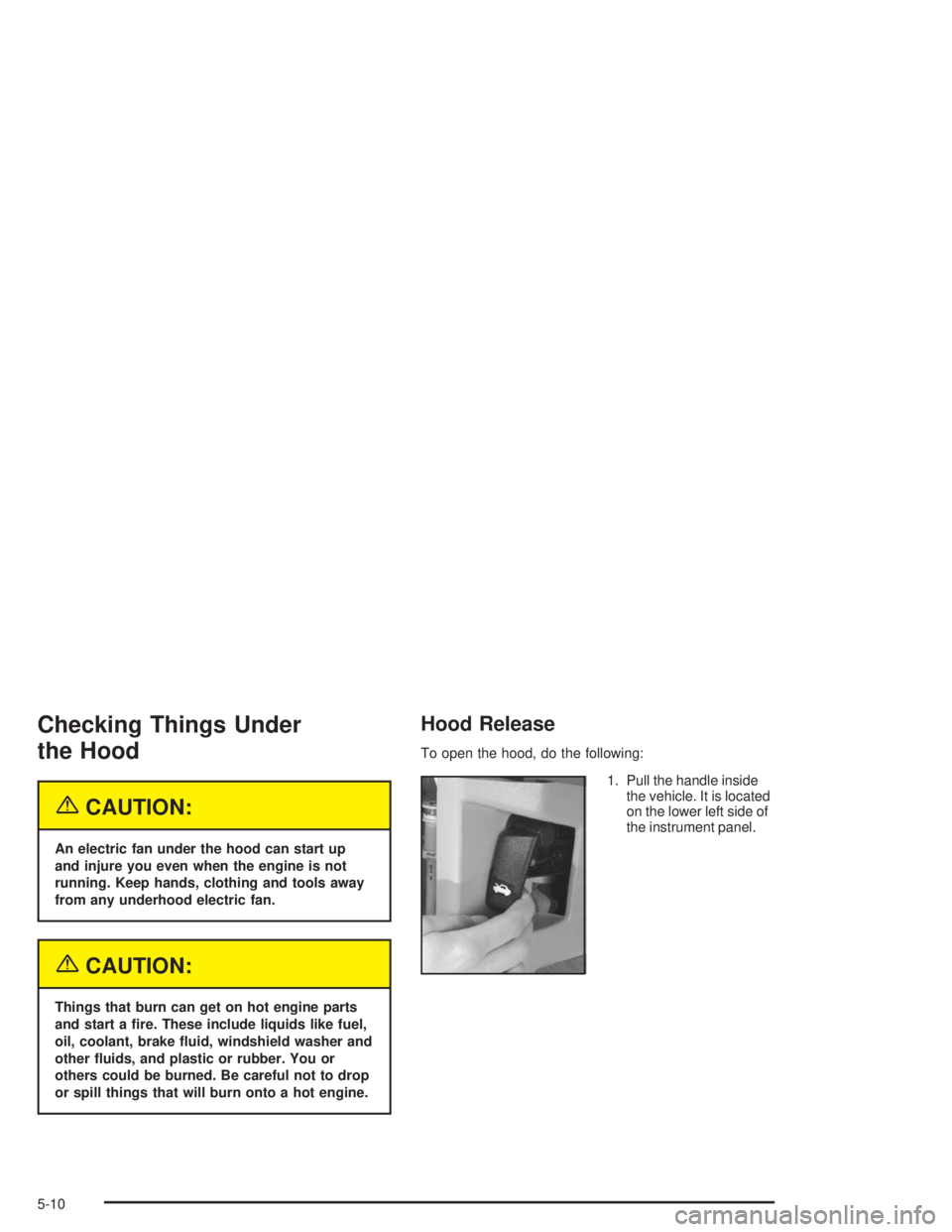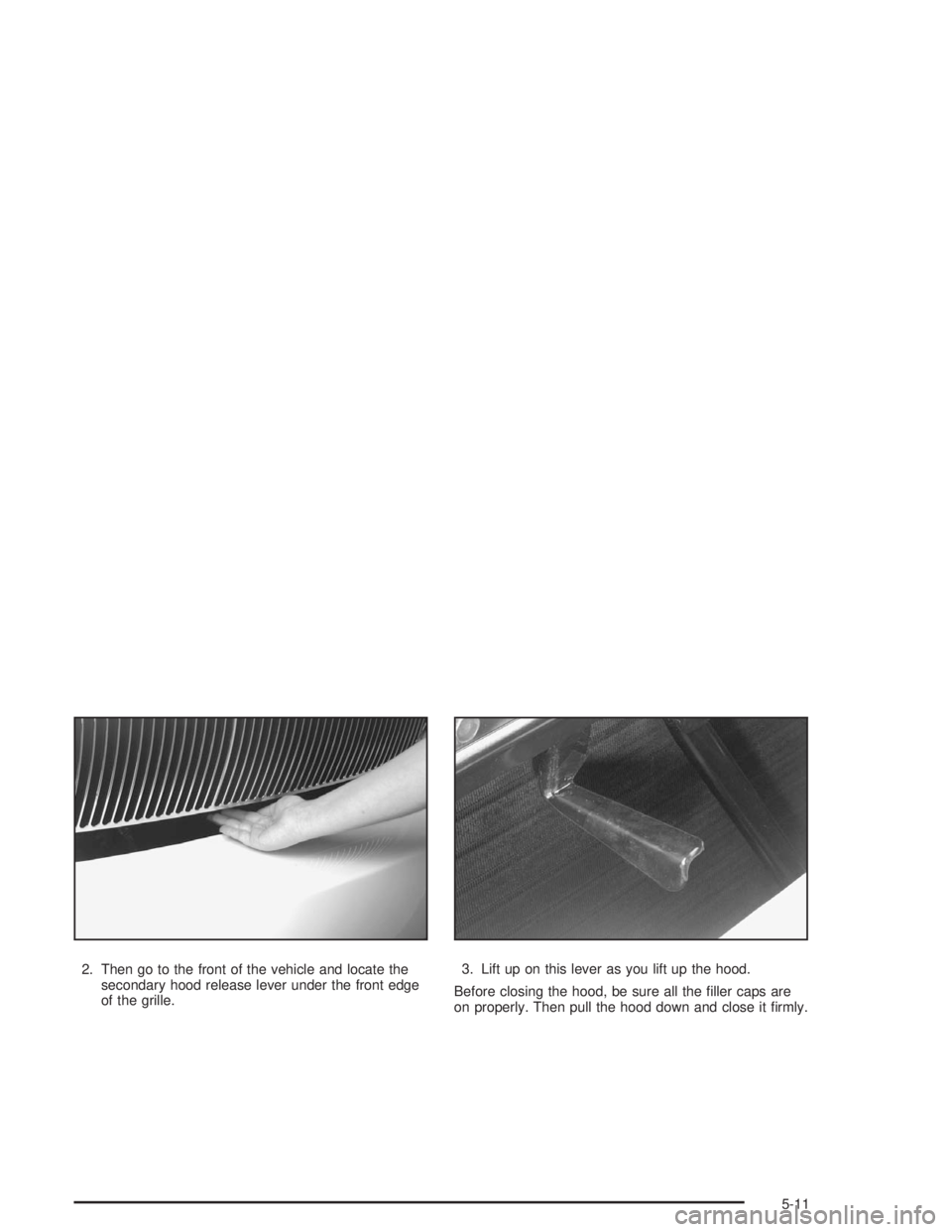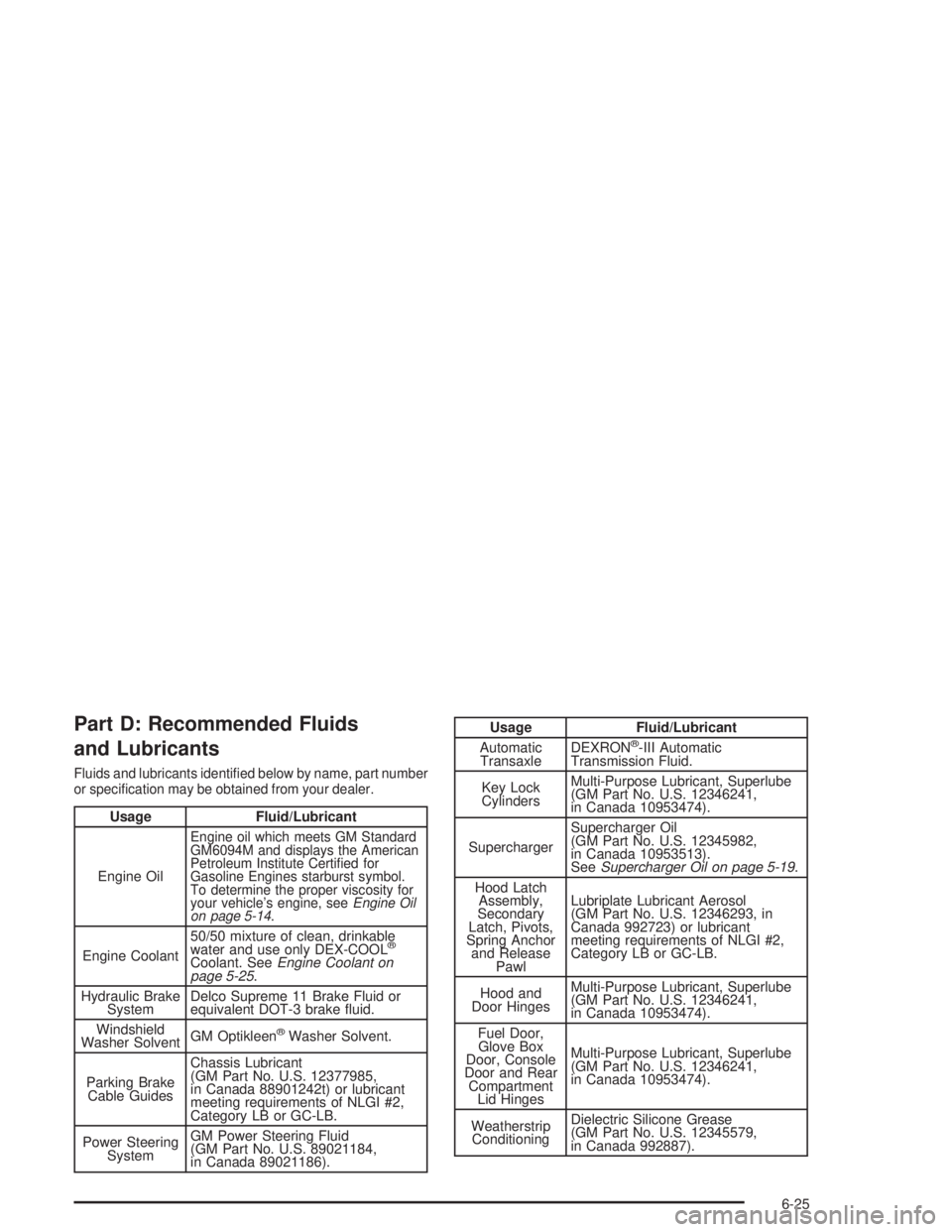2004 BUICK PARK AVENUE hood release
[x] Cancel search: hood releasePage 121 of 410

The main components of your instrument panel are the following:
A. Air Outlet. SeeOutlet Adjustment on page 3-29.
B. Exterior Lamps Control. SeeExterior Lamps
on page 3-12.
C. Turn Signal/Multifunction Lever. SeeTurn Signal/
Multifunction Lever on page 3-5.
D. Steering Wheel Controls (If Equipped). SeeSteering
Wheel Climate Controls on page 3-30andAudio
Steering Wheel Controls on page 3-78.
E. Hazard Warning Flashers Button. SeeHazard
Warning Flashers on page 3-4.
F. Instrument Panel Cluster. SeeInstrument Panel
Cluster on page 3-33.
G. Shift Lever. SeeAutomatic Transaxle Operation on
page 2-27.
H. Audio System. SeeAudio System(s) on page 3-57.
I. Air Outlet. SeeOutlet Adjustment on page 3-29.
J. Fuel Door Release Button. SeeFilling Your Tank on
page 5-6.K. Trunk Release and Lockout Button. See “Remote
Trunk Release” and “Remote Trunk Release
Lockout” underTrunk on page 2-15.
L. Hood Release. SeeHood Release on page 5-10.
M. Ignition Switch. SeeIgnition Positions on page 2-24.
N. Traction Control Button (If Equipped). SeeTraction
Control System (TCS) on page 4-9.
O. Heated Seat Controls (Option). SeeHeated Seats
on page 1-3.
P. Ashtray and Cigarette Lighter. SeeAshtrays and
Cigarette Lighter on page 3-23.
Q. Climate Control System. SeeDual Automatic
Climate Control System on page 3-24.
R. Glove Box. SeeGlove Box on page 2-47.
S. Passenger Climate Control (Option). See “Passenger
Temperature Control” underDual Automatic
Climate Control System on page 3-24.
3-3
Page 245 of 410

Service............................................................5-3
Doing Your Own Service Work.........................5-3
Adding Equipment to the Outside of
Your Vehicle..............................................5-4
Fuel................................................................5-4
Gasoline Octane............................................5-4
Gasoline Speci�cations....................................5-5
California Fuel...............................................5-5
Additives.......................................................5-5
Fuels in Foreign Countries...............................5-6
Filling Your Tank............................................5-6
Filling a Portable Fuel Container.......................5-9
Checking Things Under the Hood....................5-10
Hood Release..............................................5-10
Engine Compartment Overview.......................5-12
Engine Oil...................................................5-14
Supercharger Oil..........................................5-19
Engine Air Cleaner/Filter................................5-20
Automatic Transaxle Fluid..............................5-23
Engine Coolant.............................................5-25Radiator Pressure Cap..................................5-27
Engine Overheating.......................................5-28
Cooling System............................................5-30
Power Steering Fluid.....................................5-38
Windshield Washer Fluid................................5-39
Brakes........................................................5-40
Battery........................................................5-43
Jump Starting...............................................5-44
Headlamp Aiming...........................................5-49
Bulb Replacement..........................................5-51
Halogen Bulbs..............................................5-51
Headlamps..................................................5-51
Front Turn Signal Lamps...............................5-54
Rear Turn Signal, Stoplamps and
Back-Up Lamps........................................5-54
Rear Quarter Panel Turn Signal and
Stoplamps................................................5-58
Replacement Bulbs.......................................5-60
Windshield Wiper Blade Replacement..............5-61
Section 5 Service and Appearance Care
5-1
Page 254 of 410

Checking Things Under
the Hood
{CAUTION:
An electric fan under the hood can start up
and injure you even when the engine is not
running. Keep hands, clothing and tools away
from any underhood electric fan.
{CAUTION:
Things that burn can get on hot engine parts
and start a �re. These include liquids like fuel,
oil, coolant, brake �uid, windshield washer and
other �uids, and plastic or rubber. You or
others could be burned. Be careful not to drop
or spill things that will burn onto a hot engine.
Hood Release
To open the hood, do the following:
1. Pull the handle inside
the vehicle. It is located
on the lower left side of
the instrument panel.
5-10
Page 255 of 410

2. Then go to the front of the vehicle and locate the
secondary hood release lever under the front edge
of the grille.3. Lift up on this lever as you lift up the hood.
Before closing the hood, be sure all the �ller caps are
on properly. Then pull the hood down and close it �rmly.
5-11
Page 379 of 410

Part D: Recommended Fluids
and Lubricants
Fluids and lubricants identi�ed below by name, part number
or speci�cation may be obtained from your dealer.
Usage Fluid/Lubricant
Engine Oil
Engine oil which meets GM Standard
GM6094M and displays the American
Petroleum Institute Certi�ed for
Gasoline Engines starburst symbol.
To determine the proper viscosity for
your vehicle’s engine, seeEngine Oil
on page 5-14.
Engine Coolant50/50 mixture of clean, drinkable
water and use only DEX-COOL®
Coolant. SeeEngine Coolant on
page 5-25.
Hydraulic Brake
SystemDelco Supreme 11 Brake Fluid or
equivalent DOT-3 brake �uid.
Windshield
Washer SolventGM Optikleen
®Washer Solvent.
Parking Brake
Cable GuidesChassis Lubricant
(GM Part No. U.S. 12377985,
in Canada 88901242t) or lubricant
meeting requirements of NLGI #2,
Category LB or GC-LB.
Power Steering
SystemGM Power Steering Fluid
(GM Part No. U.S. 89021184,
in Canada 89021186).
Usage Fluid/Lubricant
Automatic
TransaxleDEXRON®-III Automatic
Transmission Fluid.
Key Lock
CylindersMulti-Purpose Lubricant, Superlube
(GM Part No. U.S. 12346241,
in Canada 10953474).
SuperchargerSupercharger Oil
(GM Part No. U.S. 12345982,
in Canada 10953513).
SeeSupercharger Oil on page 5-19.
Hood Latch
Assembly,
Secondary
Latch, Pivots,
Spring Anchor
and Release
PawlLubriplate Lubricant Aerosol
(GM Part No. U.S. 12346293, in
Canada 992723) or lubricant
meeting requirements of NLGI #2,
Category LB or GC-LB.
Hood and
Door HingesMulti-Purpose Lubricant, Superlube
(GM Part No. U.S. 12346241,
in Canada 10953474).
Fuel Door,
Glove Box
Door, Console
Door and Rear
Compartment
Lid HingesMulti-Purpose Lubricant, Superlube
(GM Part No. U.S. 12346241,
in Canada 10953474).
Weatherstrip
ConditioningDielectric Silicone Grease
(GM Part No. U.S. 12345579,
in Canada 992887).
6-25
Page 400 of 410

Fuel (cont.)
Fuels in Foreign Countries.............................. 5-6
Gage.........................................................3-46
Gasoline Octane........................................... 5-4
Gasoline Speci�cations.................................. 5-5
System Inspection.......................................6-24
FUEL INFO (Information).................................3-48
Fuses
Fuses and Circuit Breakers...........................5-99
G
Gage
Engine Coolant Temperature.........................3-40
Fuel..........................................................3-46
Speedometer..............................................3-35
Tachometer.................................................3-35
GAGE INFO (Information)................................3-48
Garage Door Opener.......................................2-43
Garage Door Opener Compartment...................2-47
Gasoline
Octane........................................................ 5-4
Speci�cations............................................... 5-5
Gate Operator and Canadian Programming........2-45
Glove Box.....................................................2-47
Glove Box Lamp.............................................3-18
GM Mobility Program for Persons with
Disabilities.................................................... 7-5
H
Hazard Warning Flashers................................... 3-4
Head Restraints............................................... 1-5
Headlamp
Aiming.......................................................5-49
Headlamp High/Low-Beam Changer.................... 3-7
Headlamps....................................................5-51
Bulb Replacement.......................................5-51
Front Turn Signal Lamps..............................5-54
Halogen Bulbs............................................5-51
Headlamps On Reminder.................................3-13
Head-Up Display (HUD)...................................3-18
Heated Backlite Antenna..................................3-80
Heated Seats................................................... 1-3
Highway Hypnosis...........................................4-24
Hill and Mountain Roads..................................4-24
Hitches..........................................................4-41
HomeLink
®Transmitter....................................2-43
HomeLink®Transmitter, Programming................2-43
Hood
Checking Things Under................................5-10
Release.....................................................5-10
Horn............................................................... 3-5
How the System Works...................................3-21
How to Add Coolant to the Coolant
Recovery Tank............................................5-32
How to Add Coolant to the Radiator..................5-34
How to Add Fluid............................................5-25
6